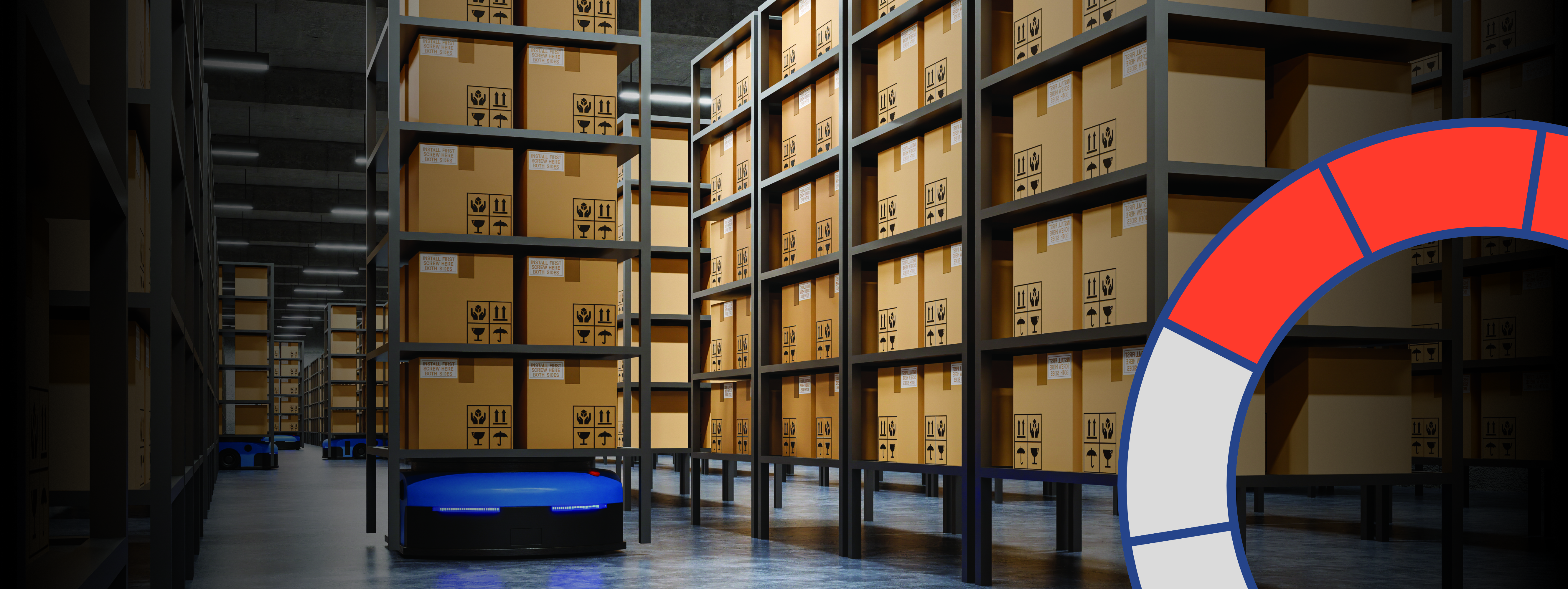 KPI indicators are metrics that measure the performance of business processes. Performance indicators are mostly used so that the organization can make constant improvements to procedures that lead to better productivity and preserve profit margins.
KPI indicators are metrics that measure the performance of business processes. Performance indicators are mostly used so that the organization can make constant improvements to procedures that lead to better productivity and preserve profit margins.
In the logistics activity, these indicators are essential for measuring productivity, costs and the level of quality of the services offered. The information obtained from these indicators will directly reflect on the effectiveness of logistics management because they allow the monitoring and evaluation of all time values, resources and costs involved in everything that means logistics processes.
A warehouse that optimizes the use of available space, has at least one element of automation and has a warehouse management system will be ideal for increasing efficiency.
But warehouses feature complex operations with many different steps, from receiving goods to shipping and many steps in between. Add to that a mix of human involvement and automation, and it's clear that getting everything to work in harmony is a delicate task.
This can make it difficult to identify areas that could become more efficient, and of course, the greater the efficiency, the greater the productivity.
So here are some suggested performance indicators to improve warehouse efficiency and ultimately profit.
Order accuracy is the indicator that monitors the degree of incidents that occur from order placement to delivery of an order. It is an extremely important indicator for everyone who wants to identify patterns and constantly correct errors that occur.
On Time In Full, also known as OTIF, measures the percentage of orders delivered on time, in the ordered quantity and with all necessary documents. It is useful for everyone who is committed to providing customers with timely and safe deliveries.
Lead Time is a KPI that tracks the duration of processes and operations from start to finish. It measures the time spent at each stage of the supply chain and helps identify strategies to optimize this time.
Stock turnover is a KPI that averages out goods and stock in the warehouse. Ideal for anyone offering warehousing services as part of their logistics solutions.
Storage costs monitor the expenses related to managing the warehouse or warehouses that the logistics service company has. These include equipment costs and maintenance costs (of both storage space and equipment).
Capacity utilization (CU) measures the utilization capacity of a warehouse. The utilization capacity of warehouse space has a major impact on the profitability of the warehouse and logistics service company.
Productivity is the indicator that measures the productivity rate of the company's employees and also has a major impact on business performance.
Transport costs measure all costs related to the delivery of orders: fuel, car liability insurance, repairs, maintenance, inspections.
The number of shipments represents the number of orders shipped from the warehouse in a certain period of time (weekly, monthly, annually). It is an ideal indicator for any carrier that constantly tracks and analyzes profit margins.
Knowing the parameters of each individual operation in detail is not enough, but it is the first step in creating strategies that can optimize the entire chain of logistics processes. To manage all these services, accurately record data and transmit data in real time to all parties involved, logistics service companies need IT solutions. One of these solutions is the WMS, which in the case of logistics service operators must include certain functionalities.
Unlike traditional warehouse distributors who own a WMS, 3PL logistics operators must also consider other additional functionalities, such as customer-specific billing management, customized documents, communication and visibility, access for logistics customers and integration with solutions software they use.
FluxVision WMS is a key component in effective warehouse management and inventory optimization, and enables the automatic and complete management of all warehouse activities for an unlimited number of entities. It optimizes all operations that take place in the warehouse, from reception to delivery. FluxVision WMS provides precision and agility in the warehouse with a minimum of effort.

